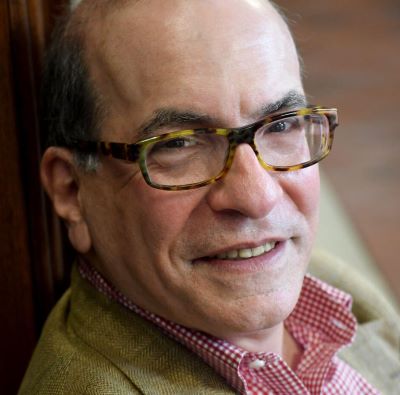Meet-the-Author Recording with Leonard S. Marcus
Mr. Lincoln Sits for His Portrait: The Story of a Photograph That Became an American Icon |
Leonard S. Marcus introduces and shares some of the backstory for creating Mr. Lincoln Sits for His Portrait: The Story of a Photograph That Became an American Icon.
Translate this transcript in the header View this transcript Dark mode on/off
Leonard S. Marcus: Hi. I'm Leonard S. Marcus, the author of Mr. Lincoln Sits for His Portrait, a biography of Abraham Lincoln. My book has its origin in a lifelong fascination with Abraham Lincoln going back to when I was in fifth grade and wrote a long story about him in school. I became a history major. My whole writing life has been about telling true stories, and I think Lincoln is one of the great figures of all our history. And I became fascinated by this one particular photo of him in which you see Lincoln as president reading a book to his 10-year-old son, Tad, and I wondered why such an intimate photograph was taken of Lincoln and what was he doing in his life at that time, and what could I learn about the origins of that photo, and that led in many, many different directions for me.
Writing a biography is telling a good story, which is also a true story, so the first thing a biographer has to do is gather all the facts, but that's only the beginning, then you start looking for a way of making a story out of it. In the case of Lincoln, I found a wonderful book that had been written by an artist who actually spent several months in the White House during Lincoln's time there painting a painting of Lincoln. And from that book, I was able to get snatches of actual conversation that Lincoln had with that artist and also other people around him. So my goal was to try to make Lincoln come alive by giving you a sense of what his day-to-day life was like in the White House.
We are very proud of all the new technologies that we have the benefit of like computers and the internet. Lincoln was living in a time of new technologies too, and he was fascinated by them, and he was one of the first people in America to figure out how to make the best use of them. So he was not just interested in having pictures of himself taken, he saw that as a way of presenting himself to all the people of the country all at once and to show that he could be a strong and compassionate leader by the way he looked in those photographs. And as a war president, he was the first national leader in the world to use the telegraph, which was kind of like Twitter, to tell his generals what to do. So he was directing a war from the White House using a brand new technology. So he was a very modern figure, and I find it very inspiring that he was so interested in innovation of all kinds from his own time.
Now, I'd like to read a page from Mr. Lincoln Sits for His Portrait and this will give you at least a sense of what his daily work life was like and the kinds of things that kept him so busy every day.
Lincoln called his second floor office the shop, and arrived there every morning at 7: 00 AM. Often, as on Tuesday, February 9th, without first bothering about breakfast, stacks of paperwork awaited his attention, much of it mailed from people who wanted something from him.
Ordinary citizens, political acquaintances, congressmen, military officers, and others of greater or lesser influence were among those who wrote to him. Some were angling for a government job or better job than the one they already had, others for a meeting or the chance to make history by offering their sage advice to the president about some pressing issue of the day. A great many simply wanted a presidential thank you, an autograph in return for the bushel of apples or slab of venison or woolen shawl they had sent the White House from out of the blue.
The carriage that ferried the Lincolns around the capitol was probably the most expensive gift he received. Articles of apparel, a smart black dress coat, a pair of socks, began arriving at such a clip even before he had left Springfield, that Lincoln looking ahead to the coming months and years, teased the fashion conscious Mary, "Well, wife, there is one thing likely to come of this scrape anyhow, we are going to have some new clothes." Two black silk stovepipe hats, which made the six foot four president look even more like a giant than he already did, were the gifts of rival New York hatters. When he was asked by reporter which hat pleased him, mourn, Lincoln deftly replied that he thought they, "mutually surpassed each other."
This Meet-the-Author Recording with Leonard S. Marcus was exclusively created in January 2023 by TeachingBooks with thanks to Macmillan.



